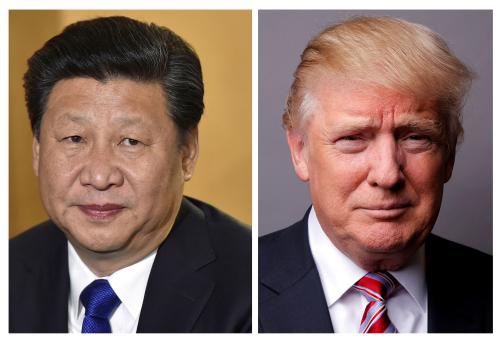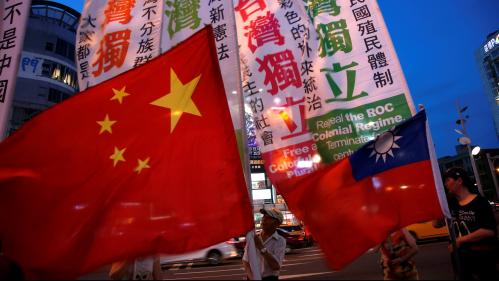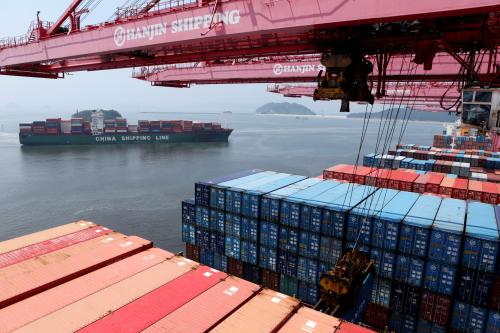The U.S.-China relationship is widely viewed as the most important bilateral relationship of the 21st century. It is perhaps more accurate to call it the most consequential relationship: If we manage relations well, we can promote the economic and security interests of each country and use our combined size and influence to resolve pressing global challenges; if we manage relations poorly, we could descend into long-term strategic rivalry, even outright conflict, in a world divided between competing economic institutions and rival security frameworks.
In recent years, a central challenge for U.S. policy has been finding the right balance between managing and narrowing differences with China, while simultaneously expanding cooperation in areas where our interests converge. Key differences have included cybersecurity, human rights, trade and investment practices, and maritime disputes in the South China Sea and East China Sea. Bilateral cooperation has focused on climate change, global development, nuclear non-proliferation in Iran, and pandemic response in Africa. Cooperation in these areas not only promotes resilience and stability in the relationship, but sends a reassuring signal to others that Washington and Beijing can work together on the global stage.
At the same time, there is a growing consensus among American China experts on the need to get tougher with China by strengthening the U.S. military and diplomatic position in Asia and then, together with friends and allies, encouraging Beijing to take more constructive positions on regional issues. Recent steps in this direction include the broadening of U.S. defense cooperation with Japan, and deploying the THAAD anti-missile system in South Korea as the nuclear program of China’s lone ally, North Korea, continues unabated.
More generally, it’s important for the United States to remain fully engaged in Asia in the face of China’s bold maritime moves and expanding economic footprint in the region.
A watchful and nervous region
If the U.S.-China relationship has important consequences for the world, it looms even larger for East Asia—particularly for the 10 countries that comprise the Association of Southeast Asian Nations (ASEAN). Indeed, these countries will be watching closely when President Trump and President Xi meet at Mar-a-Lago this week. Though perceptions vary, ASEAN countries tend to get uneasy when U.S.-China relations are tense and conflictual, concerned about the spillover effects. They also worry about potential G-2 scenarios in which Washington and Beijing could make deals or grand bargains without their participation.
For decades, U.S. Asia policy has utilized a mix of diplomatic, economic, and military tools to prevent the emergence of a dominant hegemon, making the region safe for U.S. goals like the promotion of free trade, open societies, and territorial security. While China is not on the verge of becoming a hegemon, it is challenging U.S. credibility in the region through its militarization of outposts in the South China Sea, far-reaching economic initiatives, and assertive diplomacy toward ASEAN. In the wake of U.S. withdrawal from the Trans-Pacific Partnership (TPP), China is also advancing its lower-standard Regional Comprehensive Economic Partnership (RCEP)—exacerbating regional concerns about declining American economic engagement and staying power.
What Washington should do
In this context, it is critical that President Trump signal to Xi that the United States will remain a Pacific power, enforce freedom of navigation in the region, and carry out a robust Asia policy under this administration. Such a policy should have the following elements:
- Engage regional institutions: The administration should maintain strong support for ASEAN, the East Asia Summit (EAS), and the Asia-Pacific Economic Community (APEC). In practical terms, this means President Trump should attend the APEC Summit in Vietnam in November, immediately followed by the ASEAN Summit and EAS in the Philippines. His participation will demonstrate to ASEAN that the United States is determined to remain engaged and will continue to back ASEAN efforts to promote peace, prosperity, and stability in the region.
- Encourage inclusive security networks: Alongside these efforts, the administration should further develop inclusive security networks encompassing both allies (e.g., Japan and Australia) and partners (e.g., Singapore, Malaysia, and India) to address maritime security, counterterrorism, and other regional challenges. It should also conduct regular freedom of navigation operations in the South China Sea in close coordination with allies and partners. The objective is to foster a rules-based operating system for the region that promotes economic prosperity, freedom of navigation and overflight, and the peaceful resolution of disputes based on international law.
- Expand bilateral relations with emerging partners: In addition to maintaining and modernizing U.S. alliances in Asia—with Japan, South Korea, Australia, Thailand, and the Philippines—the administration should enhance bilateral relations with emerging partners such as Indonesia, Vietnam, and Myanmar. Relations with Vietnam could expand considerably in coming years. Our countries already have a comprehensive partnership marked by growing economic ties and evolving security cooperation. Building on this progress, relations could be elevated to a more strategic level during high-level engagements later this year.
- Enhance economic involvement: Finally, the administration should vigorously promote U.S. business engagement in the region by highlighting American innovation and investment potential—including in the energy and infrastructure sectors. When the time is right, it should also consider revisiting the TPP and negotiating terms and conditions that address outstanding U.S. concerns.
Nobody should be surprised that China is pursuing its interests more assertively as it gains strength and confidence in international affairs. Understanding this reality, the United States should be prepared to compete with China where necessary, and to develop innovative forms of cooperation where possible. Such cooperation could even include disaster risk reduction initiatives in Southeast Asia, which remains extremely vulnerable to natural disasters despite its economic success. In the meantime, and in concert with the Trump-Xi meeting in Mar-a-Lago, the administration needs to convey to friends and allies that the United States will remain a trustworthy partner in the region—both now and over the long-term.










Commentary
As Xi and Trump meet, China’s neighbors will be watching
April 4, 2017